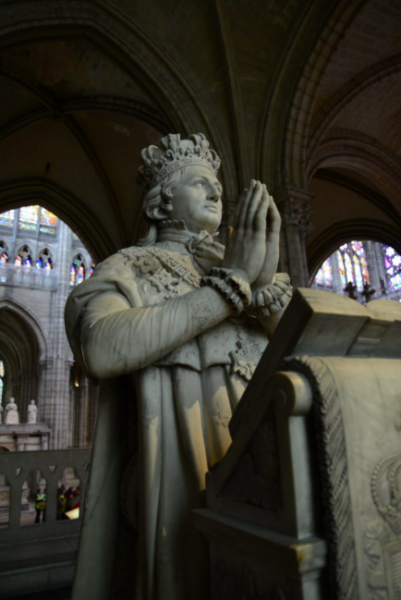History Buffs Welcome!
If you’re a history nut like I am you’ll likely be interested in crazy stuff like this. You all know that we’re about ready to publish the first two books on the French Revolution (Where Did They Put the Guillotine?—A Walking Tour of Revolutionary Paris). As part of the journey in writing this book, I’ve come away with some interesting stories.

One of the stories is about the little Dauphin who was murdered at the age of ten while a prisoner in The Temple. Interesting story but the part I want to highlight is about the doctor who performed the autopsy. He cut the heart out of the child (this was common practice back then—the heart would be buried separately from the body) and managed to keep it in his possession for many years. The liquids preserving the heart dried up and as a consequence, the heart shriveled. It was also lost for many years before it resurfaced.
Rumor Has It…
Subsequent to the end of the Revolution, many stories floated around that the Dauphin had escaped by being substituted for another young boy. The royalists clung to this theory for decades. Although not formally crowned, the Dauphin became known as Louis XVII (upon the formal restoration, his uncle became Louis XVIII). When the heart ultimately resurfaced, the question became, was this the heart of the Dauphin? If so, would this prove he died in prison? DNA testing was performed on the heart and confirmed to be his. It put to rest the conspiracy theories and the vial containing the little heart can be viewed at St. Denis, the royal necropolis outside Paris.
The next big question was whether the handkerchief inside a decorated gourd had been dipped in the blood of Louis XVI immediately after his execution on 21 January 1793. Along with images of the Revolutionary leaders, the gourd is inscribed with this text, “On January 21, Maximilien Bourdaloue dipped his handkerchief in the blood of Louis XVI after his decapitation.”
The gourd
Apparently, the gourd has been in the possession of an Italian family for over a century (can you imagine them pulling the gourd out at their cocktail parties?). Original research indicated there was a possibility that the blood on the handkerchief was that of Louis XVI.
However, new genome testing indicates that the person who provided the blood was a brown-eyed individual. Reportedly, portraits of Louis XVI indicate he had blue eyes. The scientists put a 3% chance on the blood belonging to Louis XVI. Testing also indicated a person of short stature. The king was thought to be 6’ 1” based on historical documents. The third piece of genome evidence confirms the owner of the blood had ancestry dating back to Italy. However, Louis XVI’s ancestors came from Germany and Poland.
I also found in my research that the crowds, unlike “normal” executions, were not allowed to go up to the scaffold for the king’s execution. It would have been unlikely that someone would have been able to get close enough to dip a handkerchief in the blood.
Knowing this information will make you a better person—at least at your cocktail parties. Oh, I’m going to pay more attention now to the portraits of Louis XVI.
Thanks so much for following my blog and my little journey through this incredibly interesting process of writing a series of niche historical travel books and then getting the bloody things published.
-Stew
Please note that I do not and will not take compensation from individuals or companies I mention or promote in my blog.
Are you following us on Facebook and Twitter?
Share This:

Copyright © 2014 Stew Ross

